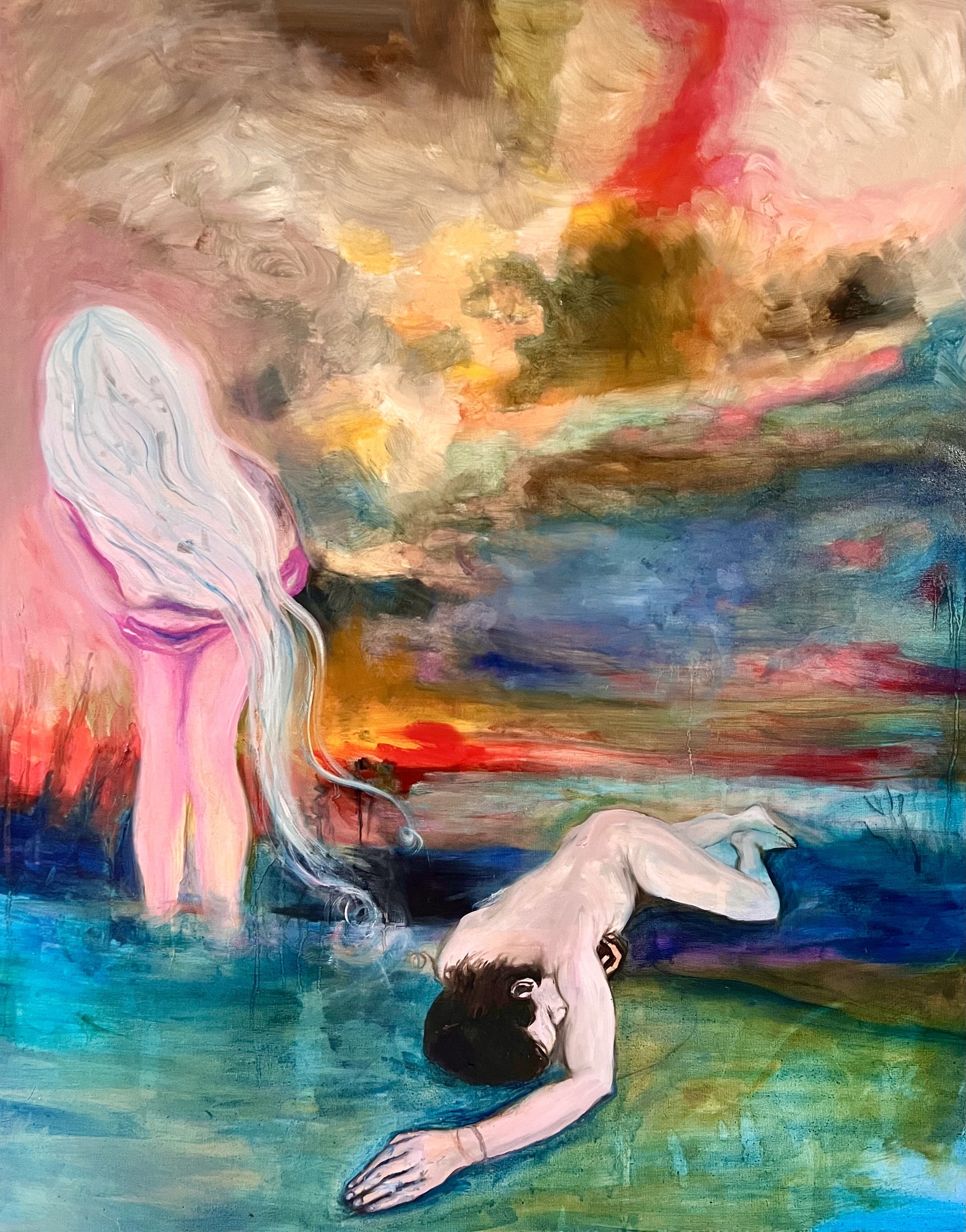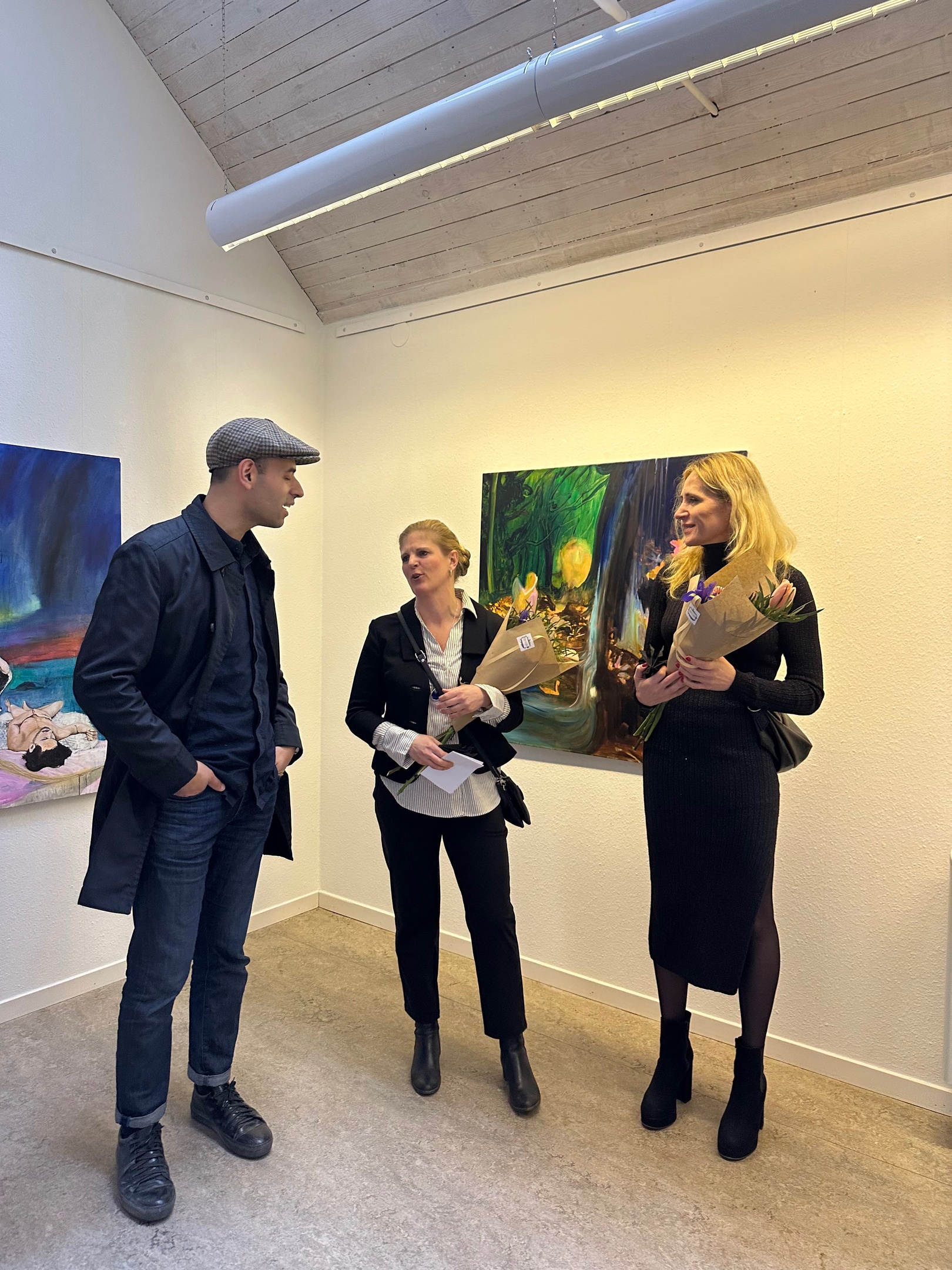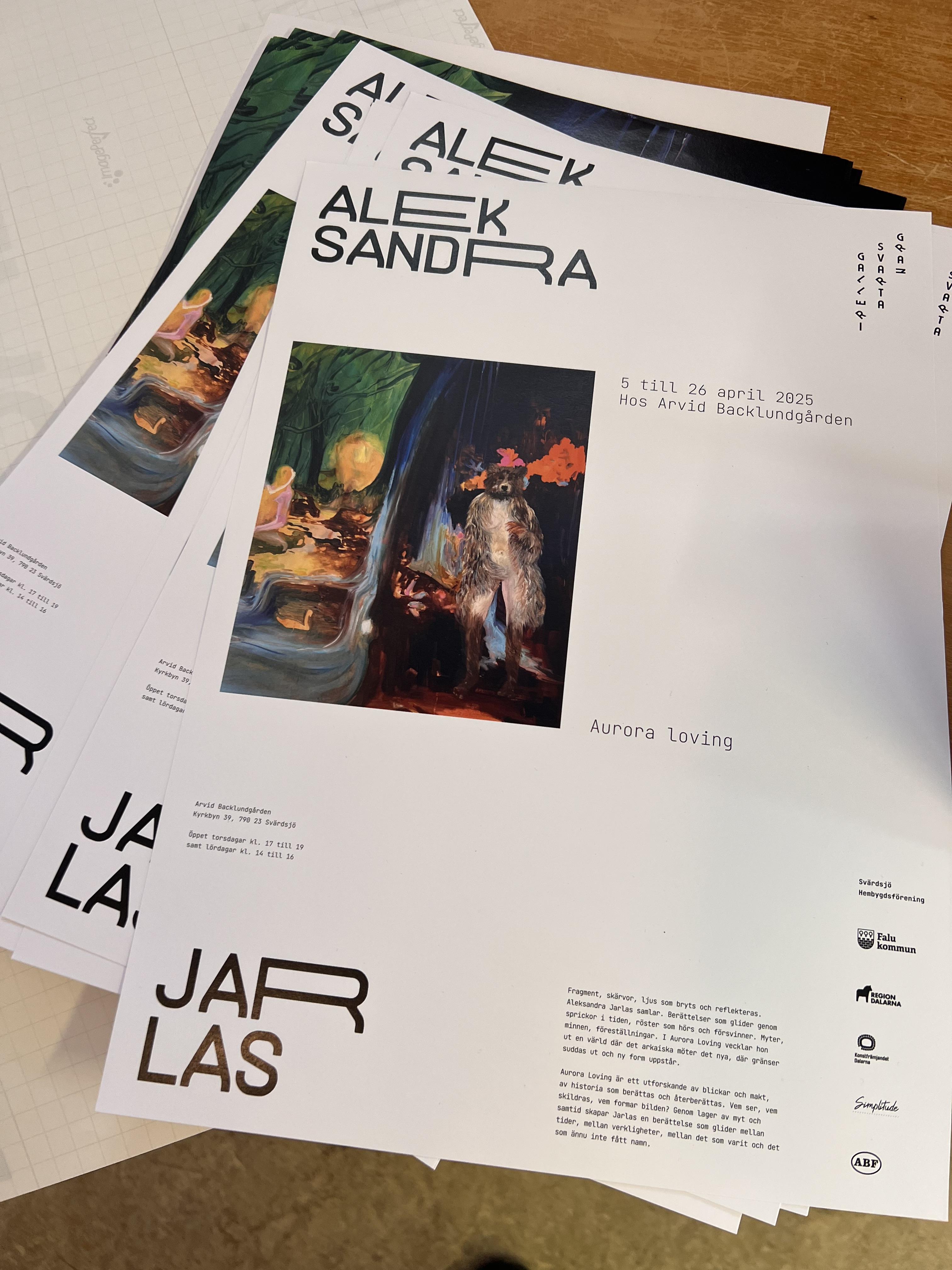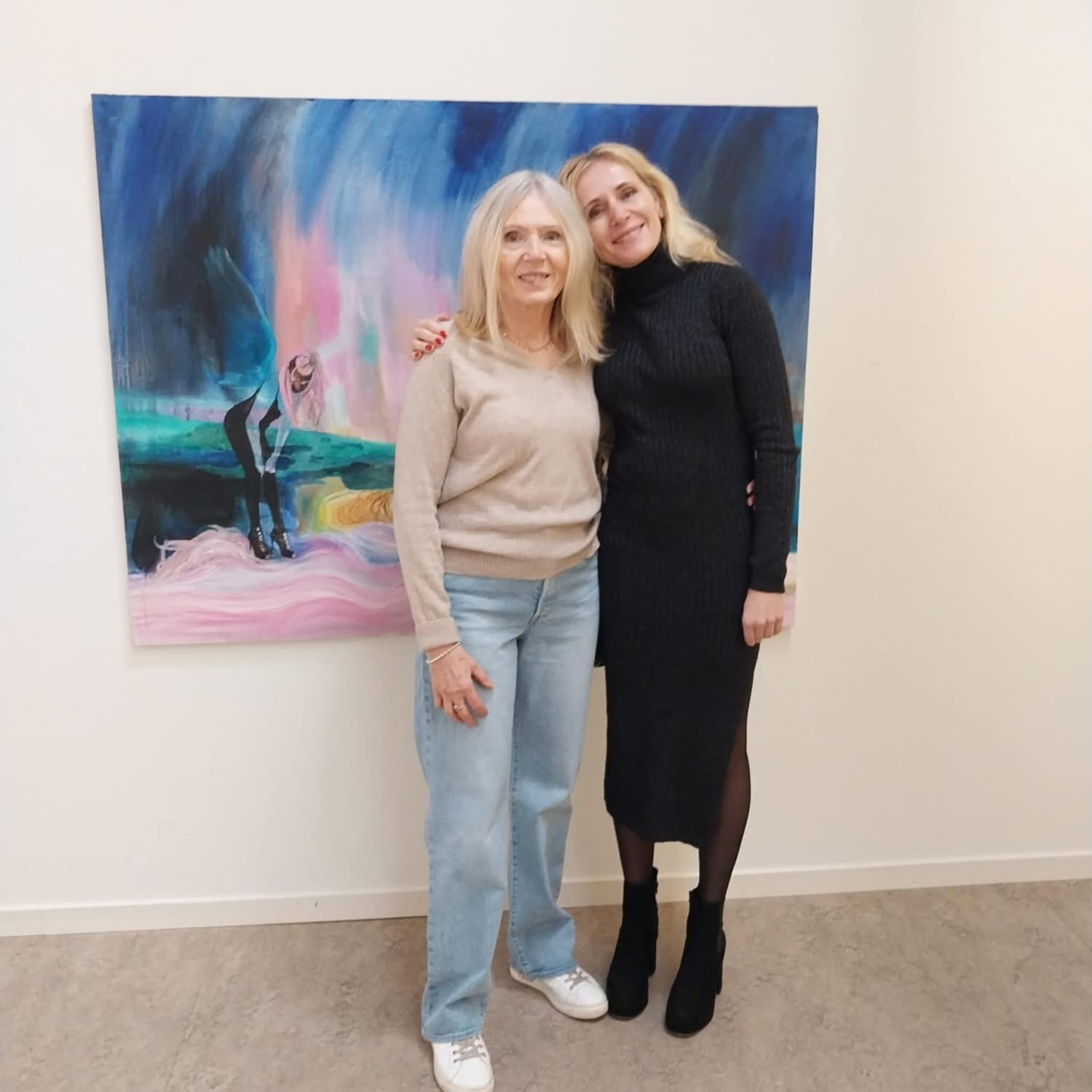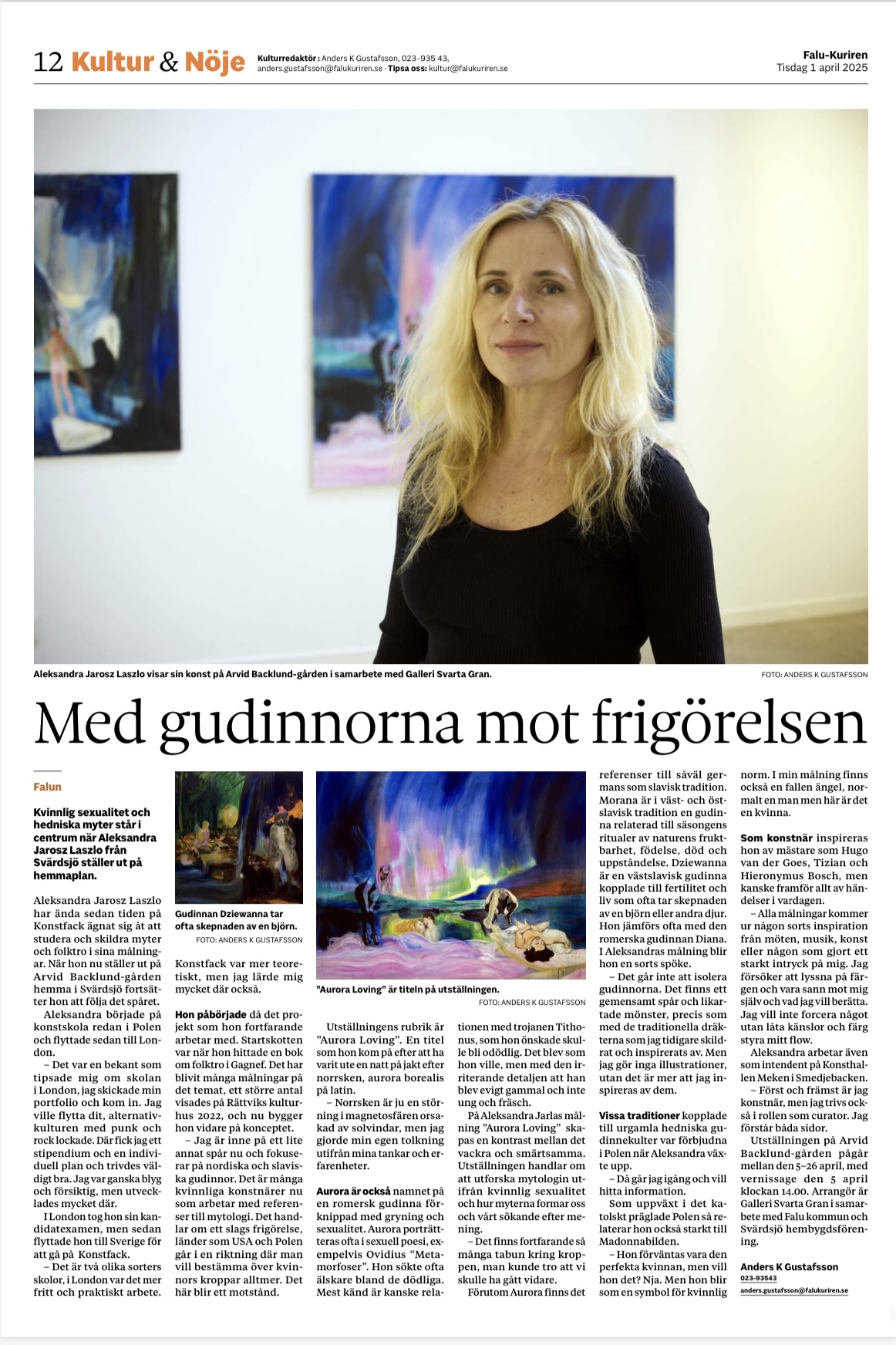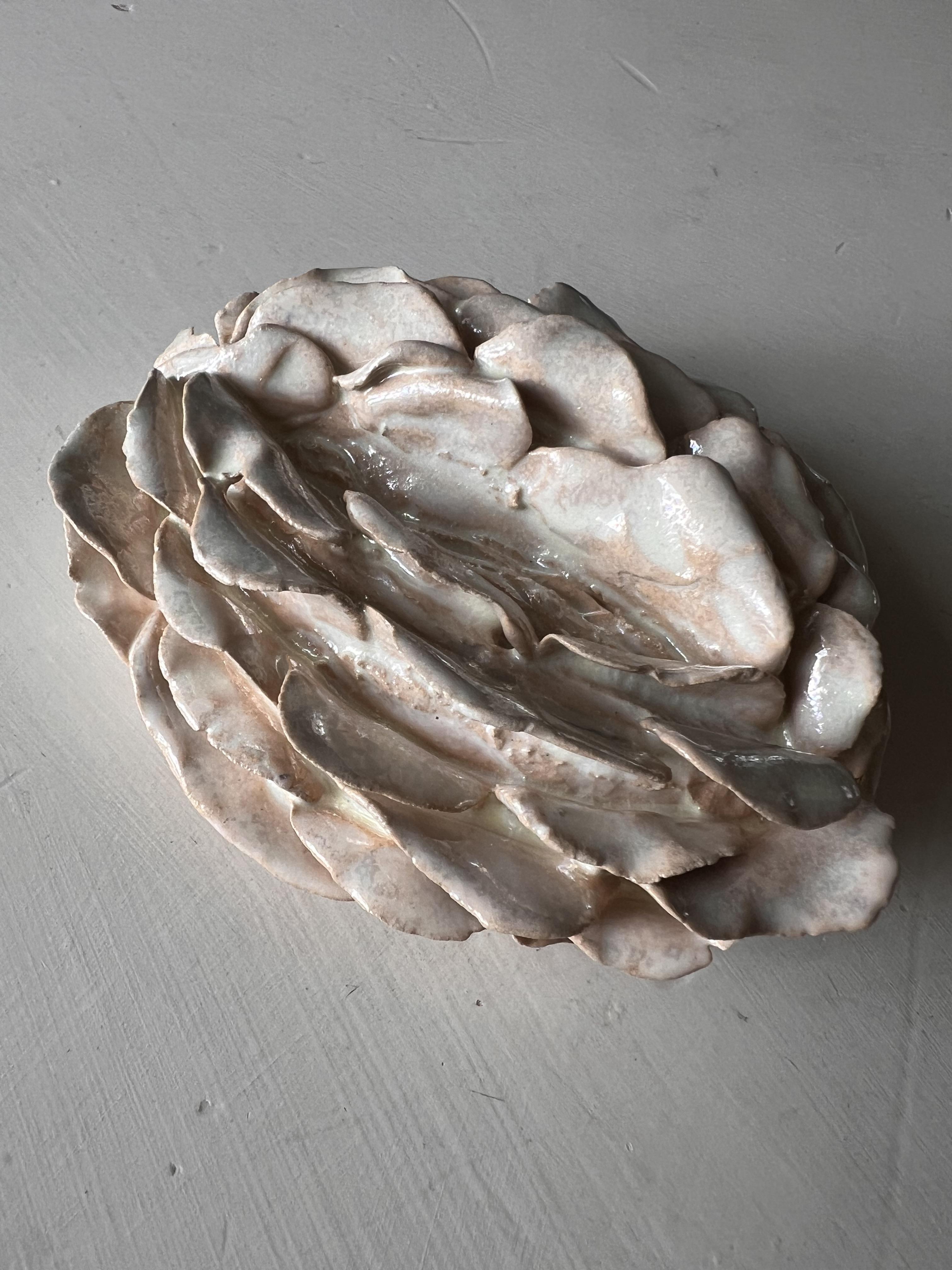Superstitions, spiritual beliefs, and understandings of the natural world that are not scientifically proven, but it just feels natural. I explore human relationships, love, hurt, betreyal, and the idea of being in a paralel word.
Solitude, time, a feeling of being “stuck” in contrast to the landscape has been reflected in terms of hope, despair and contradictory feelings.
You “should” only be happy in that beautiful place, detected from reality like everywhere in the world, where norms, structure, political and social systems dictate the terms.
My work is as well provoked by the scandinavian weather. You see the range of emotions, cold in the body, snowing (brain freeze), raining (from the eyes). The work speaks of intimacy, affection, and desire, of the impossibility of ever capturing what you feel. Various moods fuse into a symbol for the journey through life.
My work depicts female figures drawn from Nordic and Slavic legends and folk beliefs. Like a hybrid, I merge elements that—despite their structural differences—form unexpected yet harmonious combinations. I find meaning in what appears unnatural: the fusion of human and animal, the blending of myth and contemporary experience.
Women have long been, and continue to be, discriminated against through gender stereotypes reinforced by societal norms and political control over their bodies. My work explores pleasure and female sexuality within the context of myth, using a transdisciplinary approach to challenge conventional understandings of nature, gender, and desire.
I critique narratives that objectify or “naturalize” female pleasure—stories often justified through evolutionary discourse and filtered through the male gaze. Anything that resists these norms is frequently labeled as provocative, erotic, or promiscuous. These limiting frameworks have proven harmful to women.
From my own female perspective, she explores sexual expression, the objectification of women, and bodily autonomy. My work navigates the complex territories of pleasure, love, and desire—seeking to reclaim them as spaces of empowerment rather than control.
What if the body, rather than the soul, is the teacher—the one that instructs, translates, and writes upon our lives? What if the body itself is divine, a mentor and a guide? In a culture that often treats the body as sculpture—something to be judged, perfected, or possessed—I reclaim it as a living archive of memory and feeling.
The body protects, contains, supports, and fires the spirit within it. It is the launcher of experience, the vehicle through which the soul encounters the world. Without the body, there would be no sensation of transformation, no threshold crossed, no breath, no desire. Through my work, I seek to reframe the body not as an object of control, but as a source of wisdom and wild power—a rocket launcher for the soul.
This emotionally rich area of exploration is part myth, part heartache, part wonder, the intersection of folklore, spiritual intuition, and the deep inner world of human emotion. It evokes the timeless feeling that even though we live in the “real” world, there’s another world running parallel: one where things “could” have been magical, or “should” have been, if only the rules of this reality weren’t so harsh.
I am building a kind of “emotional folklore”—where myths and spiritual truths explain not just nature, but human “experience”: why we fall in love with someone we can’t have, why we grieve people still living, or why a certain place feels sacred for no logical reason.

